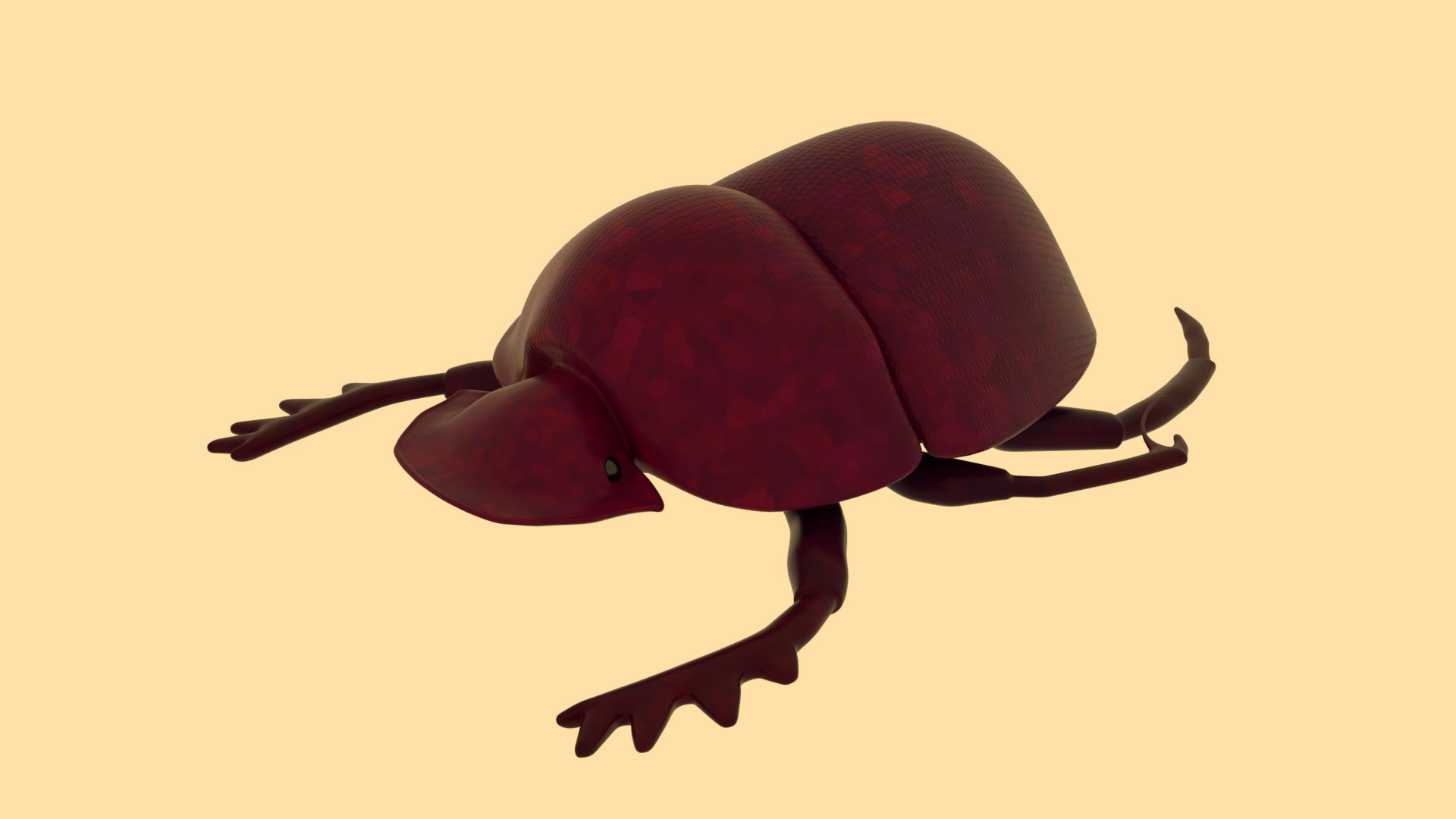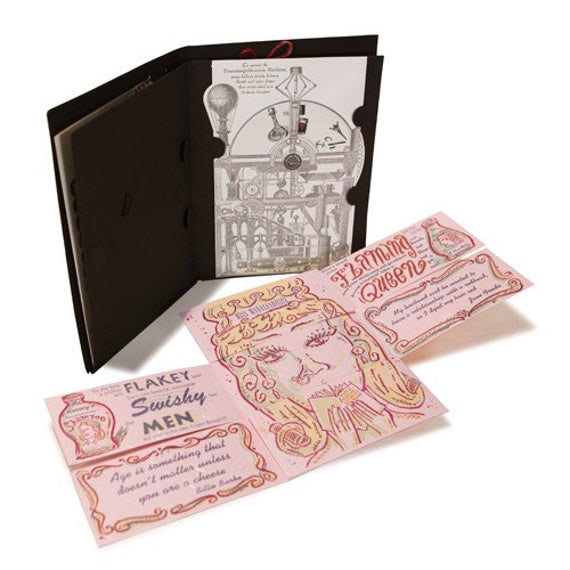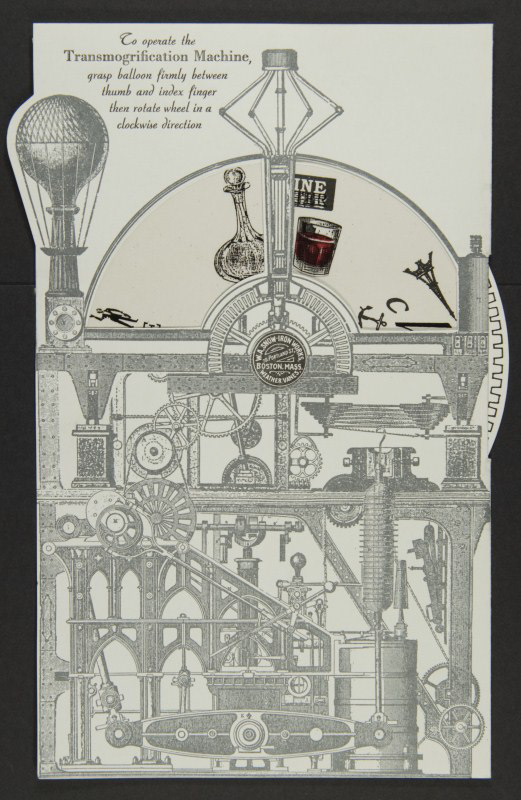I had lots of goals that I wanted to achieve this week,and for the most part I am right on schedule. I have a little more work to do on a matte painting that I should've completed yesterday, but I only need an hour or so more with it and I'll be back on track. There are a few things that are finished/in progress that I worked on this week so I have divided them up into sections below!
Shading the Beetle & Modeling/Shading the Precious Dung
One of my goals was to get the shader for the beetle squared away. Because the overall style of the film is illustrative or print like, I needed my beetle to fit into that world since it is 3D. I went for a blotchy color wash look that I think fits in well when compared to the matte paintings that I have done so far. I also realized earlier this week that I never put the dung ball anywhere on my production schedule, so I knocked that out this week. I am not sure if the shader is working yet, so I am going to keep experiementing with it. I want to use the same color wash style I did for the beetle, but I think it needs some extra details to push it further (essentially I don't know if it reads as poop...but is that a bad thing?)



Beetle Rig
According to my production schedule, I am to start animating this coming weekend, so naturally the rig needed to get done. I am a little rusty with rigging so I had extra help from a rigging expert who rigged my model up for me. The legs are IK, and the head has a simple controller that allows it to rotate.
Matte Paintings
The last thing I tackled this week were some matte paintings. I have the forest finished, with the three different seasons so that I may do the temporal shift (using a cross fade) in the film. The front trees, middle trees, and background foliage are all on separate layers so that when they are put into the comp I can get some parallax as the camera pans. I dropped in a rough shot of the beetle with the dung ball on a ground plane to get a sense of how everything looks together. Professor Chesney suggested that to integrate the ground plane with the matte that I look into a deckled edge, a torn sheet of paper to emphasize my print aesthetic.



I am not quite finished with the desert matte painting, so here is a current progress shot. I want to add a color wash to the lighter part of the rocks so that it matches the style in which I illustrated the foreground trees in my forest painting in order to keep a consistent visual language. I think I only need an hour or two to finish this matte. I am a little behind since this should be done, but I am not worried about it setting me back in the week to come. The next step is to throw these matte paintings in After Effects to test how the parallax looks and if things need to split up into separate layers.
Book Update
I have met with both Elliot and Cynthia to discuss my book and possible structures. The goal for the book this quarter is to get a dummy finished, a rough mock-up or prototype of my book and how it will work so that I can focus on getting the film done this quarter; then during my extension I can work on crafting a final version of the book.
I met Elliot last Wednesday, January 15th, and we looked at a few different scroll books and books that are delivered in boxes to try and figure out the logistics for mine. Elliot suggested that I research crankies, which are illustrated scrolls wound onto two spools. The Crankie Factory website, http://www.thecrankiefactory.com/115034625 , has been extremely helpful in providing information and resources on crankies. They are made by mounting spools in a box that has a viewing window that is rear lit. Crankies were used as tools to help tell stories, often being accompanied by a storyteller and even music. Crankies are linear, meaning that it scrolls from one spool to the other and must then be rewound back onto the original spool it started on. There are lots of tutorials on how to make a crankie, so Elliot suggested that I experiment and see if I can create enough tension with multiple rollers to create a looping version (inspired by the zig-zag structure in Bryan Kring's Sea Monster book). For our next meeting Elliot asked me to mock up a box out of foam core so that we can see what size I am thinking. We're also going to test different papers and materials in front of the projector to see what works with the rear projection best. Professor Chesney also suggested I look into yupo paper, so I will try to get a sample of that to take to my meeting with Elliot too.
I met with Cynthia this week, a printmaking professor that specializes in book arts, to further discuss ideas that Elliot had given me. We talked about possibly mimicking a conveyor belt to create the looping scroll. However, this would require a lot of testing to determine which papers have enough friction on spools of a certain material. We also talked about the possibility of using sprockets to turn the paper, but that overtime this would degrade and could ultimately make the book non-archival. Cynthia suggested that I consider looking at star charts or maps, which involve spinning discs. So instead of scrolling paper, the user would turn/spin a disc which would eclipse the film and reveal different text. There is an example of this technique being used in an artist book called Purgatoys by Esther Smith. Cynthia says Elliot has a copy of it in special collections, so when I meet Elliot next week I will ask her to pull this book too.



